#Mass Builder
Explore tagged Tumblr posts
Text

the fact that I beat the first new mission with two my weapon buttons not assigned and with a couple weapons I forgot to unequip eating up ammo stock doesn't bode well for the challenge level of the new missions..
8 notes
·
View notes
Text



Mass Builder is cool, theres a LOT you could do making mechs
(tho the gameplay leaves a lot to be desired imo)
3 notes
·
View notes
Text
M.A.S.S. Builder: MPMCL-CQK
A post for the MPMCL-CQK.
I should've done this sooner so I could move onto other stuff but oh well whatever ig.
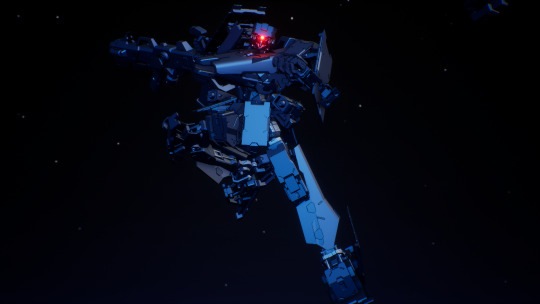
The descent of the MPMCL-CQK after being dropped off from an unknown cargo plane. Many others will soon follow.




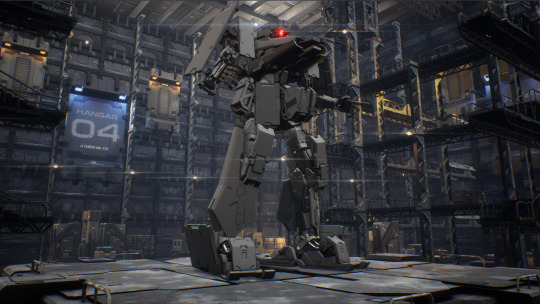
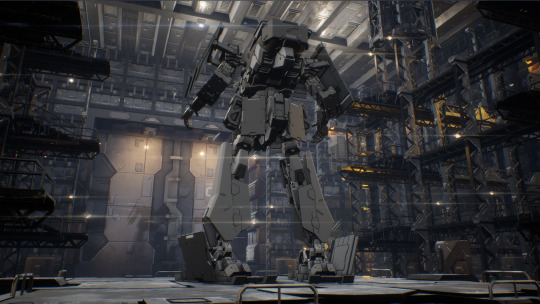
Hangar Picture
Specifications (Pasted from the MASS Builder Community Discord):
Basic Information Company: ATMRRI Designation: MPMCL-CQK Height: ~5 Meters Mass: 8.7 Tonnes
Armaments Arms: ]- SG-280CN [Cluster Napalm] Shoulders: N/A Back: N/A Secondary: ]- Hip mounted Napalm Cluster Rockets ]- Beehive Grenade Launchers
Features Protection: ]- Spaced Armor Plates ]- No composites at all Mobility: ]- Atmospheric Plasma Thrusters ]- 2D Thrust Vectoring ]- Carbon nanotube Artificial Muscle Misc: ]- High Capacity Lithium-Sulfur Battery ]- Controlled by a very simple Fully Autonomous Unit ]- FAU can be replaced with a cockpit if needed ]- The bare minimum of sensor units required to function
History A very simple and easy to produce unit. The MPMCL-CQK's (Mass-Produced Mobile Core Light - Close Quarters Kit) sole purpose is to wreak havoc in whatever site it's deployed to before being destroyed or self destructing. As such, it's made out of very simple materials and features barely any protection, with only spaced armor plates are used in order to protect it from some small-arms fire, debris, and from HEAT munitions. For its role, it features a high capacity shotgun loaded with napalm munitions, hip mounted napalm cluster rockets, and anti-personnel/light vehicle grenade launchers outfitted throughout the body. These napalm munitions are far more deadly than traditional ones, being capable of completely melting enemy vehicles within seconds and doing the same for fortifications. In the event that the MPMCL-CQK is hit, the most likely scenario will be the unit turning within a puddle of molten metal along with additional shrapnel and debris. In the event that it either completes its objective without dying, gets disabled without setting off its munitions, or runs out of ammo, the FAU will self-destruct and render its systems completely unusable. As such, the MPMCL-CQK can only be described as a walking warcrime.
Specifications and description for the ATMCM-IFK originally posted 01/17/2022
8 notes
·
View notes
Text
AggroChat #425 - Check Your Filter
AggroChat #425 - Check Your Filter - This week we talk about GW2 Gyala Delve, Finishing Diablo 3 Season 28, Last Epoch Multiplayer, and Phantom Brigade.
Featuring: Ashgar, Belghast, Grace, Kodra, Tamrielo, and Thalen Tonight we start off with some light discussion about Guild Wars 2 and more specifically the new patch that dropped on the 28th including a brand new map called Gyala Delve. We talk briefly about wrapping up Diablo 3 Season 28 and looking forward to the Last Epoch Multiplayer patch landing next Thursday. We talk a bit about…

View On WordPress
#aggrochat#Armored Core#diablo 3#Funko#Gaming#Guild Wars 2#Last Epoch#Mass Builder#MechWarrior Online#microsoft#MMO#MMORPG#Phantom Brigade#sony#Video Games#Wagon World#Wizards of the Coast
0 notes
Text
Some indie game recommendations from ones I’ve played or know enough about them to suggest them to others(mostly in no particular order), Part 8.
Parts 1, 2, 3, 4, 5, 6, 7, 9
LiEat

Rise of the Third Power

Sakuna: Of Rice and Ruin

Indivisible

Jimmy and the Pulsating Mass

Eastern Exorcist

Everhood
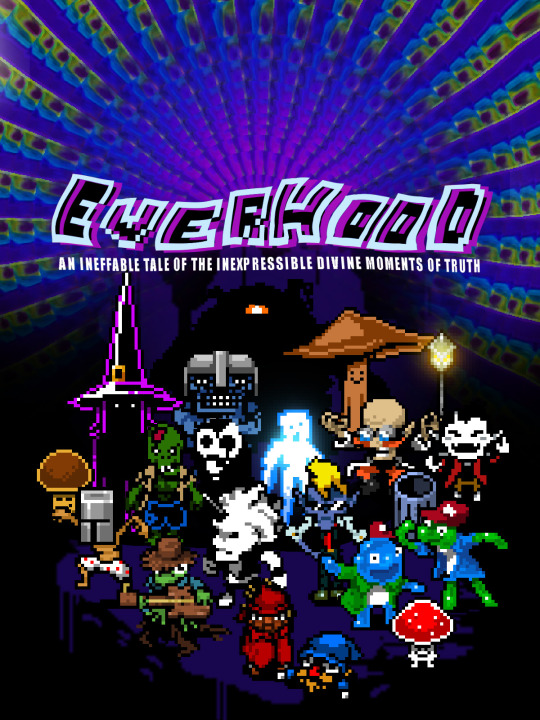
JoJo's Bizarre Adventure: The 7th Stand User(JJBA fan game)

Gravity Circuit

Rusted Moss

Laika: Aged Through Blood

Bramble: The Mountain King

Refind Self: The Personality Test Game

nameless(fan game for Hololive Vtuber Nanashi Mumei)

M.A.S.S. Builder

NAIRI: Tower Of Shirin and it's sequel NAIRI: Rising Tide.

Fatal Twelve

Fading Afternoon

The Friends of Ringo Ishikawa

Killer Frequency

Oh…Sir!! The Insult Simulator

Full Void

ENIGMA:

Seven Days

Siren's Call

Koumajou Remilia: Scarlet Symphony

Little Goody Two Shoes

Pocket Mirror ~ GoldenerTraum

Battle Princess Madelyn

When the Past Was Around

#Indie Games#long post#LiEat#Rise of the Third Power#Sakuna: Of Rice and Ruin#Indivisible#Jimmy and the Pulsating Mass#Eastern Exorcist#Everhood#JoJo's Bizarre Adventure: The 7th Stand User#JoJo's Bizarre Adventure#Gravity Circuit#Rusted Moss#Laika: Aged Through Blood#Bramble: The Mountain King#Refind Self#nameless#M.A.S.S. Builder#Nairi#Fatal Twelve#Fading Afternoon#The Friends of Ringo Ishikawa#Killer Frequency#Oh…Sir!! The Insult Simulator#Full Void#Little Goody Two Shoes#Enigma:#Seven Days VN#Pocket Mirror#Siren's Call
77 notes
·
View notes
Text
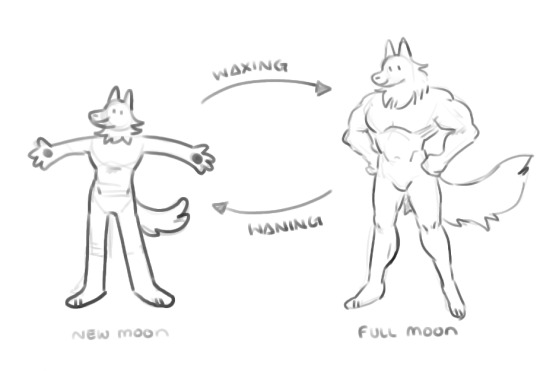
so um. i decided the put victor on artfight
#sketch#ocs#oc:victor#what do you do when your furry guy is also a werewolf. obviously you just beef him up#this is the guy who doesnt know hes a werewolf btw#hes a health nut and a body builder. as the moon waxes he builds muscle and attributes that to his routine#but he also has trouble w/ impulse control#and all shit just breaks loose on the full moon like he goes nuts and eats tons of junk and red meat#and as the moon wanes he looses muscle mass and gains coherency and attributes the loss to his 'lapse in judgement'#he does not know or consider that it may be for another reason#yes he can see all the other mythical creatures in this setting. no he does not know thats unusual
68 notes
·
View notes
Photo








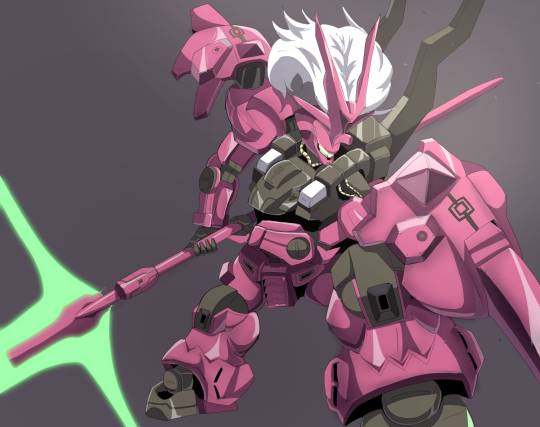

#Char's Counterattack#Geara Doga#Jegan#Mobile Suit Gundam: Iron-Blooded Orphans Urdr-Hunt#Gundam Marchosias#Mobile suit Zeta Gundam#Qubeley#Gundam Wing#Taurus (Sanc Kingdom Colors)#Gundam 0080#Gundam Alex#Guncannon Mass Production Type#Mobile Suit Gundam MS IGLOO: the Hidden One Year War#Gundam 0079#Gogg#Model Suit Gunpla Builders Beginning G#Beginning Gundam#The Witch from Mercury#Guel's Dilanza#Gundam ZZ#Galluss-J#Hamma Hamma#R-Jarja#Mashymre Cello#Chara Soon
95 notes
·
View notes
Text
however.. it's not just blorbo thoughts that haunt me with that song... it's teacher thoughts too! 🤯
#for the past few months I've been going back and forth about whether i want to teach middle or high school#and this is nowhere near a deciding factor#BUT... consider the following with me.. performing one version as a mass piece at the beginning of the year with the full choir and then.#🤌🏻#at the end of the year doing the other with just the seniors because they have become the old man who will never again pass this way 😭#i feel like dickau's would be better as a mass piece because of it's more relaxed rhythms. the chords sound fuller than macdonald's which#would probably sound nicer with all hands on deck! and then macdonald's more rhythmically challenging arrangement would be cool for the#seniors 😁 but this is to my untrained and pretty rusty ear so 🕴️ we'll see how i feel when i go back to school#another idea I've entertained is giving each class a like. Challenge Song their freshman year and recording it‚ then reprising it their#senior year and letting them compare their performances to reflect their growth as musicians.. i think that would be really cool :]#i dont think i could conduct the bridge builder with that in mind though.. id start crying lol! but i think it is fundamental as a choir#student to watch your director cry in the middle of a song+ continue on as if nothing was happening#but anyhow idk man.. the idea of working with high schoolers to really build up their musicality and prepare them for the world is very#appealing to me but you can't be a musician without the foundations which i could establish in middle school#and foundations are very fun to teach as well!! but foundations can be taught in a beginning choir course or during summer camp#so 😩#the music i want to direct is all satb which suits high school better. but is it selfish to choose which way to go based on what music you#like? 🕴️🕴️ the contemplations man.... anyhow i have a lot more growing and learning and Studying to do before this will even matter#can't prepare kids for the world when I've scarcely explored it myself!#sriracha.txt
2 notes
·
View notes
Text
okay I know very few people would actually want to play this (and that it'd probably not be very good and be really hard to make) because it'd be. a lot.
but there's a part of me that really wants a mech game that's just. completely over the top in its customisation and combat system (kinda like. armored core times ten)
gonna put the rambling under a readmore because it got long
not quite like mass builder, because while the cosmetic customisation is probably the best in any game (regarding mech construction), the only parts that affect your gameplay are the weapon cores. and mass builder's gameplay and story are. passable at best
(to memory the armour you chose used to actually affect your stats like weight and armour and health — and by extension fuel efficiency and energy load and the like — but they did away with that at some point and made it so you can build a mech that looks like a walking fortress that performs like a lightweight frame and the only things that affects your stats and gameplay are weapons and os tuning. and weapon customisation doesn't matter outside of the barrel type for guns and the handle type for melee)
basically, I want a game where you can customise just about every cosmetic aspect of your mech (like in mass builder), from individual aesthetic components to the systems and materials that everything operates off
ideally the parts customisation would be somewhere on the level of mass builder (the only part of that game that doesn't suck complete ass and actually manages to be good), broken up sort of like
head>faceplate, side/back, skull/top of head
arm>shoulder, upper arm, elbow, forearm, hand
torso>primary chestplate, additional chest armour (optional), waist, back armour/flight unit, front pelvis armour, back pelvis armour, front skirt, sideskirt, back skirt
leg>thigh, knee, lower leg, ankle, foot
or at least fall of cybertron
head
shoulder
forearm
chest/torso
leg
class-specific/mod parts/special parts
maybe also mass builder's additional "accessories" where you can add four to each component (though that would be a lot harder to design around if they were treated the same as normal components)
and then you can choose like. what kind of armour and material your mech's armour panels are made of (ideally you'd be able to pick the type for each specific part separately)
armour type being things like rha, composite metal foam, tiled ceramic-metal composite, etc, and material being the type of metal and ceramic and polymer
and as well as that, things like sensors, warning systems, targeting systems/fcs, and the type of frame/motor/mobility/joint systems your mech uses
and for weapons, something similarly stupid, so you'd be able to pick like. a weapon type — laser, plasma, conventional kinetic, railgun and coilgun, particle beam, missiles/rockets, etc, then you'd get a selection of cores to which you could add and select barrels, loading systems, targeting systems, ammo, etc that all affect not just the performance but the key traits of the weapon
and then in combat you and your enemies all operate under component-based damage and your armour has different resistances to different types of damage, and different threshold levels (something like negate>resist>overwhelmed. but with better names)
so if your armour gets hit by something it negates, you don't take any damage from that and your armour is unaffected, but if you get hit by something it resists the component under it takes either no or greatly reduced damage but the armour loses some amount of durability based off the damage of the attack, and if the attacking round is overwhelming then the armour fails (and different armour types fail in different ways) and the component beneath it takes most or all of the damage from the attack
And then you've also got the ac style repair and ammo costs and the like (possibly adding a fuel/energy cost to it?). and maybe if you screw up badly enough you can either choose to end up in debt like the old ac games or you can try to play with your mech in a state of disrepair (and if you keep getting screwed and your mech gets completely trashed you need to rent a mech from some corporation and you fall into debt anyway)
#random robot rambles#yes this is basically me wanting some stupid fusion of ac6 war thunder mass builder and some other games and random ideas#I have more ideas and thoughts but this is already long enough#and again I know this probably isn't something people would want to play/wouldn't make a good game#I'm just very stupid and I really like being able to customise as much as possible#and also having customisation matter (unlike in mass builder)
1 note
·
View note
Text
no one draws Zoro big enough, to my liking...
#besides cannibal#based cannibal who i owe my life to#yall play it so safe with his mass#make him some pretty gym boy#when u know hes a body builder snorting poppers before doing 10k lbs dead lifts
3 notes
·
View notes
Text

so close to getting under 7 mins
1 note
·
View note
Text
Washitaw Dugdumoundya - go see for yourself
information for the public about the Nation of people who are indigenous to the American continent. Many people are unaware that this Nation of people even exists at all. We are a multicultural, highly spiritual nation of aboriginal, indigenous Americans who were originally called Washitaw Mu’urs (or Ouachita as it was amended by others throughout our history). We accept both lineal and non-lineal citizens into our Nation. We DO NOT discriminate based on race or religion, as this is the heart of God and of our current Empress, Her Highness, Verdiacee “Tiari” Washitaw-Tunica (Turner) Goston El Bey. Her Highness Previous Spiritual Advisor of Spiritual Education and Information of the Ministry, Oukhara Zeshera, states No Longer Advisor), “All of us within our nation are creations of the Divine Creator, and we are all our Brothers and Sisters. We need to learn our past spirituality, so we can build as a nation. Remember, the first principle in Washitaw is LOVE!”
Imperial Royal Court French & Spanish “The Washitaw de Dugdahmoundyah was recorded as The Oldest Indigenous People on Earth in the final list of all attendees.”
In 1993, The Washitaw Indigenous Nation of Mound Builders received its United Nations number: 215/93. To date, the Empress, as one of the living heirs of Henry Turner, has recovered the title to 68,883 acres of land comprising most of the northern part of the ‘said state of Louisiana. The Washitaw never drew boundaries, We are the original inhabitants of all the lands from wherever you find mound sites you find part of the Empire in so called north America
( A-Meri- Ta ). The one letter rule change one letter to hide the truth they change the letter ” T ” into “C” from Meri-Ta, to A-meri-ca.
The area from Alleghenies to the Rocky Mountains, from Canada down to the Gulphe of Mexico, including East and west Floridaes: and the Pecos River, encompasses the domain of the Empire Washitaw de Dugdahmoundyah. A land mass over 30 million acres. This is one of the regions that the United States claim as part of the Louisiana Purchase.It’s the same region Abraham Lincoln coined as, The Egypt of the West.
The Ancient and Medieval American Mississippian culture 500-1500 AD
Going down a deep dive of the Mississippian mound culture of precolumbian United States.

I knew some stuff about the topic, pretty basic and precursory information, but now I think I'm gonna do some more in depth research. It's just fascinating to learn how throughout the Mississippi river region and deep south there were large cities that rivaled medieval cities in Europe with populations in the tens of thousands. Cahokia Illinois for example.
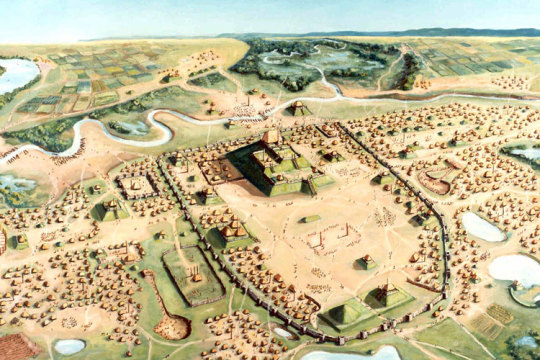

And they made all kinds of really cool artifacts
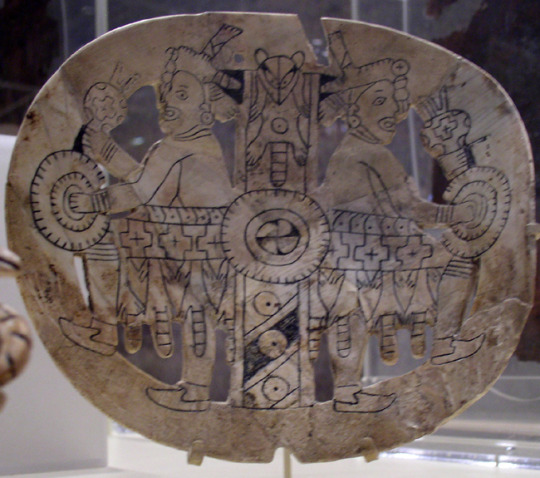

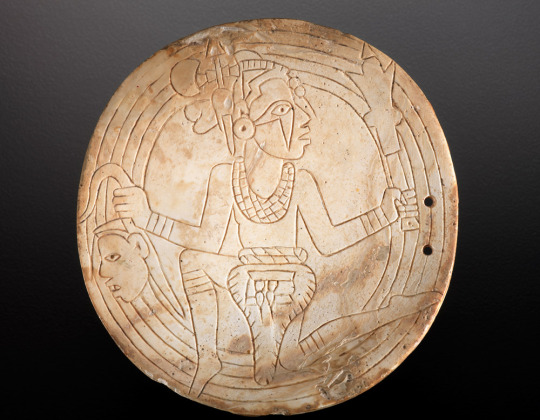
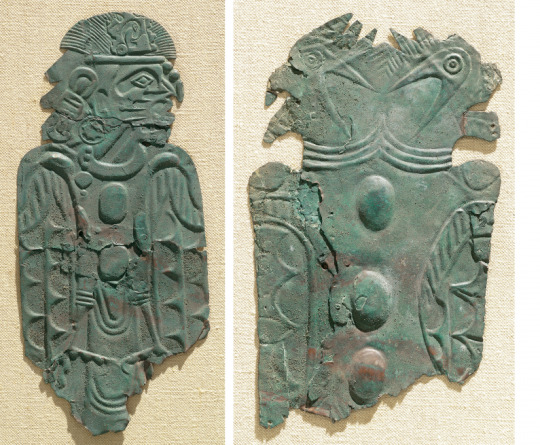

They had trade routes all over North America. For example copper from the Great Lakes region, shells from the Atlantic and Gulf Coast, and Obsidian from Mexico. In addition their own goods have been found exported to archaeological sites all over North America.
Then around the 14th century the Little Ice Age started, which was basically a sudden drop in global temperatures lasting until the mid 19th century, which resulted in crop failures and famine worldwide. In addition large populations were already stretching the food resources and agriculture of the area. This resulted in the decline of urban culture among the Mississippians. At the time in Eurasia the same was happening, which helped bring about the Black Death. So there were hard times all around. The 14th century was a bad time to be alive almost everywhere. Final collapse occurred in the 16th century when smallpox swept through the Americas after European contact.
Unfortunately for us they had no system of writing, at least none that can be found. So we will probably never know their story and history as well as say the ancient Romans. All that we know is pieced together through archaeological findings and oral history of their modern descendants.
Anyway I'm gonna find some good audiobooks to listen to on the subject while I do my weightlifting.
#information for the public about the Nation of people who are indigenous to the American continent. Many people are unaware that this Nation#highly spiritual nation of aboriginal#indigenous Americans who were originally called Washitaw Mu’urs (or Ouachita as it was amended by others throughout our history). We accept#as this is the heart of God and of our current Empress#Her Highness#Verdiacee “Tiari” Washitaw-Tunica (Turner) Goston El Bey. Her Highness Previous Spiritual Advisor of Spiritual Education and Information of#Oukhara Zeshera#states No Longer Advisor)#“All of us within our nation are creations of the Divine Creator#Imperial Royal Court French & Spanish “The Washitaw de Dugdahmoundyah was recorded as The Oldest Indigenous People on Earth in the final li#The Washitaw Indigenous Nation of Mound Builders received its United Nations number: 215/93. To date#the Empress#as one of the living heirs of Henry Turner#has recovered the title to 68#883 acres of land comprising most of the northern part of the ‘said state of Louisiana. The Washitaw never drew boundaries#We are the original inhabitants of all the lands from wherever you find mound sites you find part of the Empire in so called north America#to A-meri-ca.#including East and west Floridaes: and the Pecos River#encompasses the domain of the Empire Washitaw de Dugdahmoundyah. A land mass over 30 million acres. This is one of the regions that the Uni#Washitaw Dugdumoundya
349 notes
·
View notes
Text
Got to the part of designing the self insert where I give up and let myself just have fun. Fuck it my weapon can look a bit like a knockoff Harbinger. Harbinger is fucking cool. I would absolutely have a scythe sword are you kidding that’s sick
#it is also a bow for anyone wondering. I’ve spend hours working out the schematics#it may not make enough sense to physically exist in the real world but it’s a fantasy self insert it doesn’t have to flawlessly account for#the mass and space taken up by each collapsible part it just has to look cool and make me happy. which it does#v1 made more spatial sense but I couldn’t work out the sword aspect within its limits and i really wanted that sword form. all that being#said I think trying to build this would be very interesting so maybe after I get around to building crescent rose for a Ruby cosplay (which#is likely still a ways out; I’m no builder lol) I’ll give my still unnamed weapon a shot#I totally am just having calypso go to signal and base their weapon off harbinger for real btw. because I can 🩵#this entire self insert crafting process has been so funny I put something down and immediately go wait no that’s just Ruby. oh well#curse of watched this show for the first time at a key point in my development as a person and stole rubys personality. whoops!#zoracontent
1 note
·
View note
Text
Parking Matters

As urban and suburban areas across the country struggle to add more density to their city centers, the issue of parking is going to become a weightier topic and one that you as a real estate professional need to be aware of.
Some cities have done a great job of developing with walkability in mind. Cities like New York and San Francisco have robust transit systems that get people moving around the city. So, what if your city doesn't have that system in place? What if they have only recently had that system in place and people haven't yet adopted the mindset that a car really isn't required to get around? What if the transit system isn't as robust as it needs to be yet to give people that security?
There are a number of areas that are facing growing pains which may get worse instead of better in the coming years, where density will increase before the number of cars decrease.
Washington State: An Evolving Example of Density
For example, Washington State has a lofty goal of adding 1.1 million homes over the next 20 years. Very important House Bills were passed this year (1110 and 1337) to help spur on construction by way of multi-family housing and ADUs (accessory dwelling units). Both of these bills include some version of minimizing or eliminating on-site parking requirements for properties that are close in proximity to transit.
Bill 1337, for example, generally says that two accessory dwelling units will be permitted on single family residential lots in addition to the primary residence. If that lot is within half a mile of a rapid-transit line, including bus lines, then there are no additional on-site parking requirements. The logic here is that if there is easy proximity to a bus, then someone would be more-comfortable either getting rid of their vehicle or not buying one in the first place.
The challenge is that anyone who has been driving their own vehicles for a while, has the habit of jumping into their car and to go wherever they want. It will be tough to convince these folks to get rid of their cars unless they have a dramatic lifestyle shift – like moving from the suburbs to downtown Seattle. However, as transit improves, it will be easier for people to opt into a system of transportation by transit only. Eventually, cars in denser areas will become less necessary and there will be fewer of them.
This is not going to happen overnight. Neighborhoods will have more cars to park as their density increases. However, this may also be a necessary evil to get people to rethink their dependence on cars.

Multi-Family Developments
Let's talk about another aspect of parking – new multi-family developments. Did you know that, according to Statista, an asphalt-on-ground parking spot costs approximately $122.50 per square foot in Seattle? Although there are no hard-and-fast dimension rules, according to AsphaltIndustrial.com a very standard parking spot size is 18 feet long by 8.5 feet in width. Here is the math on that – a standard parking spot takes up 153 square feet and costs $18,742.50 on average to build in Seattle. If a developer is building a 50 unit building and requires one parking spot per unit, that parking is going to cost a builder almost a million dollars just in parking, and that is 7,650 square feet that is going to house cars, not people.
I know what you are thinking – a parking garage is a more-efficient use of space, so why not just build up? Great point, but the cost of a “basement” garage spot in Seattle is $205 a square foot – almost double. In fact, some put the cost to build a spot in an underground structure closer to $80,000 per space. I would highly recommend you read this white paper on parking produced by the Whatcom Housing Alliance that dives in deeper on these numbers.
Too Busy to Market Your Business? Try LeadMagnet and let our experts do it for you!

Home Builder Impact
At a time when our builders need to be focused on the best and most-efficient way to add housing that is affordable, the requirement to include parking creates an undue burden on our builders and developers. Not every development is the same, and builders and developers should be able to assess the market need for parking and build accordingly also taking into account off-site parking opportunities.
For example, let's say a developer was building a new residential building in a busy downtown area with a limited footprint. The developer is planning on putting 36 units in the building. And let's say the current requirement is 70 parking spots (1 spot per bedroom with a mix of 1-3 bedroom units being built). However, in this example case, the development is within a mile of the local college, on a rapid-transit bus line, and most of the target demographic doesn't own a vehicle. Should the builder be required to devote 10,710 square feet of building space (the equivalent of 10 additional units on average in the building) for parking? Remember, that would also add approximately $2 million to the project (using the Statista Seattle dollars) – a cost that would then be passed down to the consumer and drive housing prices up.
What if instead, the developer could determine that only 20% of those spots were really needed which could be reserved for a monthly fee so the costs only pass to the people who need the spots, not everyone? Further, let's imagine there is a parking garage nearby that can take the overflow or people can choose to not have a vehicle readily-accessible. Further, what if this developer invests in a rentable bike or scooter solution as an alternative to the bus? There are plenty of solutions that can help mobilize residents without the cost and space requirements of parking.

Home Buyer Impact and You
As real estate professionals, if you have a buyer with one of more cars and they are considering buying in an urban or suburban area, this is an important conversation to have. How essential is on-site parking to them? How close to transit do they want to be? What kind of transit do they need to be close to? Do they need a secure place to park a bike or a scooter?
Parking and transit are just two of the aspects of what is needed to create more walkable neighborhoods. Easy-access rentable bikes and scooters, bike lanes, small grocery stores, and restaurants are also important. Parks and trails are also components of walkable cities as are other pedestrian-centric improvements such as crosswalks, wide sidewalks, traffic quieting mechanisms, and trees.
The conversation around parking and transit will continues to evolve. As you discuss these issues with your clients you may also want to brush up on what a dedicated parking spot may cost or the value this adds to a property that includes it. Value depends on a number of factors:
Are the parking facilities covered or uncovered?
If covered, is it a garage or a carport?
Is the spot in a shared garage (such as a space in a condo building's garage)?
Does the property simply have a parking strip or driveway along the side of the house?
Is an EV charger included?
The values of these facilities and amenities vary widely from area to area with the value beginning at around $10,000 for an established urban neighborhood. According to the New York Times, a single parking spot in that city can be valued at over $250,000! In fact, some property owners without cars who own a parking spot in New York City can realize rent of $500 per month or more when they rent their spaces out to car-burdened residents.
Change is Here to Stay
If you are selling real estate in the middle of Nebraska or the wilds of Alaska, this article probably isn't doing anything for you. However, much of the United States is entering or already deep into a period of shifting urban and suburban design. For those of us practicing in an area that is making a concerted effort to provide more housing for its population, parking is going to be a part of that conversation.
This means you need to be part of that conversation in terms of understanding what your city and county is discussing for parking requirements for new construction, how that impacts surrounding neighborhoods, what additional density is planned for different neighborhoods and how parking plays into that, and finally having discussions with your clients about their parking needs and the value of their on-site parking assets.
I encourage you to do your reading and understand the relationship between parking and housing costs in new developments. Learn what your local building association is saying about parking requirements and help them get their voices heard by your city and county councils.
SOURCES FOR FURTHER READING
[Statista] Construction Costs of Parking Space in U.S. Cities
[Asphalt Industrial] Parking Space Dimension Guide
[Whatcom Housing Alliance] Parking Policy & Housing Affordability: How minimum parking requirements impact housing costs and what cities can do about it.
Follow Denise on Facebook
Follow Denise on Twitter
By Denise Lones CSP, M.I.R.M., CDEI - The founding partner of The Lones Group, Denise Lones, brings nearly three decades of experience in the real estate industry. With agent/broker coaching, expertise in branding, lead generation, strategic marketing, business analysis, new home project planning, product development, Denise is nationally recognized as the source for all things real estate. With a passion for improvement, Denise has helped thousands of real estate agents, brokers, and managers build their business to unprecedented levels of success, while helping them maintain balance and quality of life.
#HB#Washington#Density#Housing Shortage#Housing density#housing solutions#parkting#Seattle#Home builders#working with buyers#mass transit#real estate#real estate coach#Denise Lones#The Lones Group#attached dwelling unit#ADU#DADU#ADU/DADU
0 notes
Text
And so it makes sense that these are now the places where fascism grows; that’s what these places were designed for. The suburbs were invented as a reactionary tool against the women’s liberation and civil rights movements. The US government, in concert with banks, landowners, and home builders, created a way to try and stop all that, by separating people into single homes, removing public spaces, and ensuring that every neighborhood was segregated via redlining. The suburbs would keep white women at home, and would keep white men at work to afford that home. These were explicit goals of the designers: “No man who owns his house and lot can be a Communist,” said the creator of Levittown, the model suburb. “He has too much to do.” The reason Target has become the locus of today’s particular right-wing backlash is the same reason countless viral TikToks attempt to convince women that they’re at risk of being kidnapped every time they’re in a parking lot. It’s the reason why true crime is one of the most popular podcast genres in America, and why many refuse to travel without a gun by their side and shoot people if they set foot on their driveway.
[...]
It is of course true that these mass hysterias are part of an organized right-wing movement that is attacking human rights across the country—through legislation banning abortion, gender-affirming care, and books, and making it illegal for educators to teach American history accurately. But the shape this movement has taken is not coincidental; it is in fact the product of the unique shape of public life in America, or lack thereof. Suburbanites do not have town squares in which to protest. They do not have streets to march down. Target has become the closest thing many have to a public forum. We often hear that urban areas are more liberal and suburban ones more conservative, and we’re often told that this is because of race. That may be partly true, though cities are whiter than ever and suburbs more diverse than ever. Instead, it may be that suburbanism itself, as an ideology, breeds reactionary thinking and turns Americans into people constantly scared of a Big Bad Other. The suburban doctrine dictates that public space be limited, and conflict-free where it exists; that private space serve only as a place of commodity exchange; that surveillance, hyper-individualism, and constant vigilance are good and normal and keep people safe. It is an ideology that extends beyond the suburbs; it infects everything. Even cities, as Sarah Schulman writes in The Gentrification of the Mind, have become places where people expect convenience and calmness over culture and community. What is a life of living in a surveilled and amenity-filled high-rise and ordering all your food and objects from the Internet to your door if not a suburban life? To make matters worse, the people who have adopted this mindset do not see it as an ideology, but as the normal and right state of the world; they, as Schulman writes, “look in the mirror and think it’s a window.” So when anything, even a gay T-shirt, disrupts their view, they become scared.
8K notes
·
View notes
Text
VIATICA
A new interactive fiction available free to read on itch.io and written in Twine.
Set in a dystopian, post-apocalyptic future, with a focus on personal growth, as well as platonic, familial, and romantic bonds.
Your world is a desert, both figuratively and literally. Speech is prohibited, books are outlawed, and any meaningful human interaction is nonexistent. Humans are reduced to the job they do for The City. There are no names; instead, everyone is identified by a number.
You are H-313, a healer.
Create and customize your character: male, female, or non-binary; gay, straight, or bisexual. Become an individual in a world of drones. Learn to speak, express your emotions, define your personality. Dream big, resist tyranny, inspire the masses, and forge a new world. Or not. This is your journey, after all.
There are no point-based choices or outcomes. No choice is wrong—it simply changes the type of person you grow to become.
ROs:
B-485, Lion (he/him)
He is a builder, stoic and strong. He is tall and muscular with brown skin and black, coiled hair and beard. At 26 he is the eldest of the group. Later in the story, he chooses the name Lion for himself. He is fierce and protective of those he cares for. But what truly sets him apart from other workers is his ability to speak clearly and articulately. How? More to the point, can he teach you?
F-525, Heron (he/him)
He is a feeder, aloof and placid. He is medium height, with long blonde hair usually tied back in a ponytail and pale blue eyes. He is 22 years old, same as you. Later in the story, he chooses the name Heron for himself. He does not question his role, nor act in any way contrary to what is expected. What passions and tempers will you find when that veneer cracks? More importantly, why does he seem so familiar?
S-622, Ferret (she/her)
She is a sweeper, slender and scrappy. She is medium height, with olive skin, dark brown hair and narrow grey eyes. She is 21 years old. Later in the story, she chooses the name Ferret for herself. She is impulsive, stubborn, and quick to anger. When you first meet her she is very combative, but you eventually see the fearless and inquisitive soul underneath. Could she be a kindred spirit, or perhaps even more?
R-793, Robin (they/them)
They are a burner, lithe and wary. They have ivory skin, curly red hair, and heterochromia: one eye is green, the other brown. They are 20 years old. Later in the story, they choose the name Robin for themself. In a world where roles are based on gender and strict definitions of what a worker is, they have always felt out of place. Their discomfort was made worse by a recent traumatic experience. Can you help them to accept and appreciate the worthy person that they are?
Content Warning: This story is intended for mature audiences. Possibly triggering topics present in the story include blood, violence, death, suicide, rape (mentioned), child abuse, mature language, and sexual content (optional).

481 notes
·
View notes